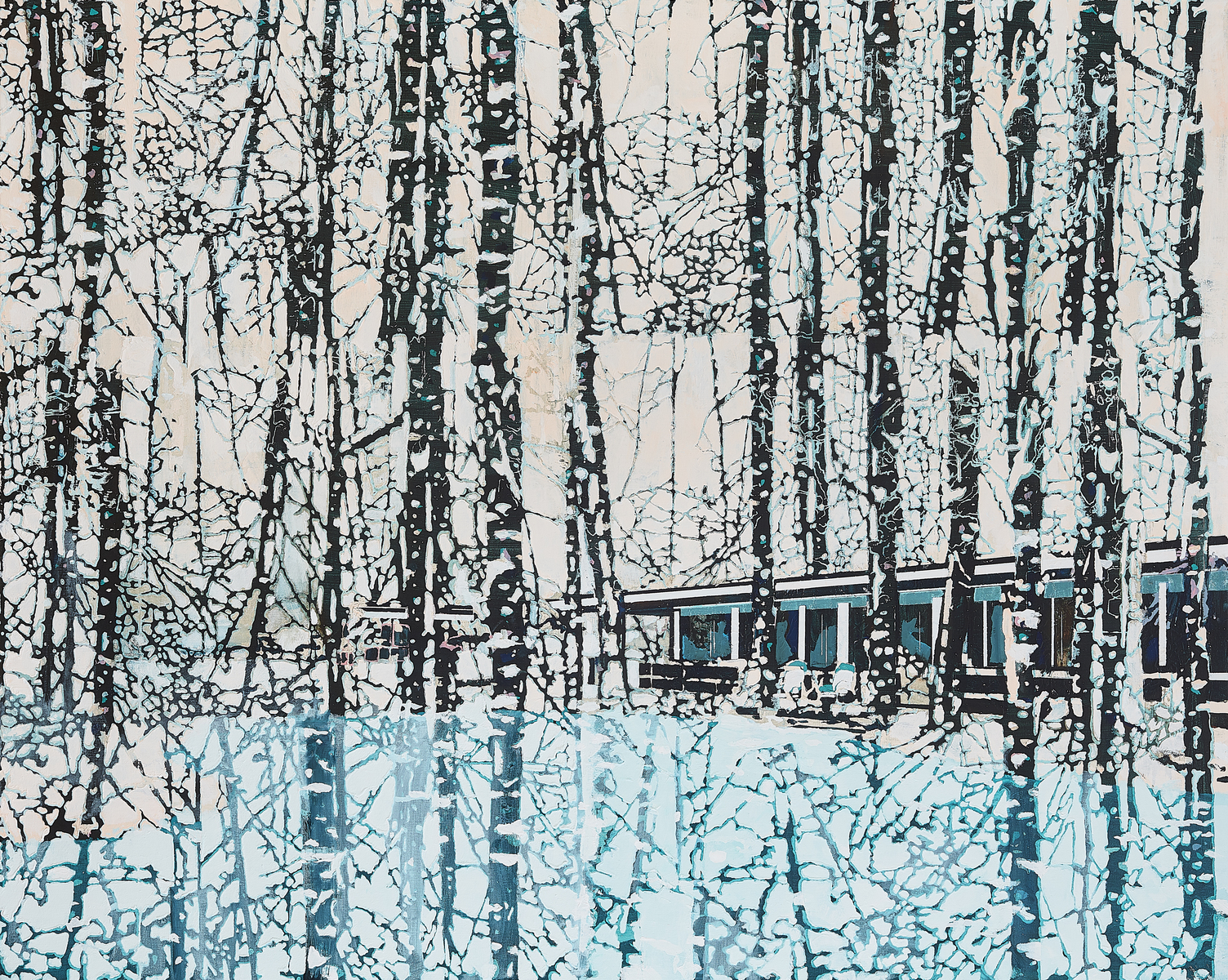AGAINST LIGHT
Sophie Gannon Gallery
18 Oct 2022 – 05 Nov 2022

Paul Davies: Against Light
While the covetable buildings that have appeared in Paul Davies’ paintings may seem recognisable, they are in fact imaginative amalgamations, created from the artist’s vast archive of photographs of iconic modernist architecture. The protagonist of the artist’s new series, however, is a real-life structure – the Walsh Street House – a light- and air-filled abode designed by Australian architect Robin Boyd in 1957.
Davies first visited Walsh Street (in the Melbourne suburb of South Yarra) close to a decade ago, but returned to the house as a subject in 2021 following his relocation to Australia after living in LA. The House served as a way for him to reconnect with home, but its structure – particularly its elegant blurring of the division between indoor and outdoor space through the building’s orientation towards its large central courtyard – equally seemed to reflect the pandemic’s reshaping of our home environments, demanding that they fulfil the multiple and often competing roles of the domestic, work, family and leisure. (1) This sense of the fluidity of priorities and physical space also takes place in Davies’ paintings, as the artist’s photographic stencils are collaged and then painted; their overlapping planes literally bringing the outdoors in as foliage sits alongside Featherstone sofas and overhangs the clean lines of the House’s interior staircase.
The pastel hued palette of the works in Against Light are drawn from the colour ways of old printed maps, where country borders and territories are delineated by areas of block colour. However, unlike the crisp lines that appear on maps, the edges of Davies’ surfaces are often softly blurred. The halo of different colours that can appear around forms within the works are due in part to the layering of their paint surfaces and the role of chance introduced by using the stencil. But they are also inspired by the “contre-jour” works (meaning, against the light) of modernist Australian photographer Mark Strizic (who was the first to document Walsh Street). Contre-jour results in a silhouette of the subject, strong backlighting, and dramatic high contrast, and produces images that can sometimes seem more dreamscape than factual.
Photography is also central to the two sculptures in the exhibition, whose interlocking pieces are made from the photographed sections of negative space between the architecture of the Walsh Street House. These outlines were then traced onto balsa wood before being cast in bronze. Exploring similar ideas in three-dimensions, the sculptures poetically convey the feeling of space – in Davies’ words, ‘the shape of a space, what it feels and looks like’ (2), rather than the specific location from which they were drawn. Their components arrive flat-packed, ready to be constructed, re-oriented and changed at their owners’ will. Just as we desire and imaginatively occupy Davies’ dreamhouse locations, these works encourage a physical and conceptual engagement with space and its absence and invite us to fill the gaps with our own thoughts.
Kelly Gellatly is a curator, writer and arts advocate and is the founding director of Agency Untitled.
(1) Email correspondence with the author, 13 September 2022
(2) Conversation with the author, 14 September 2022
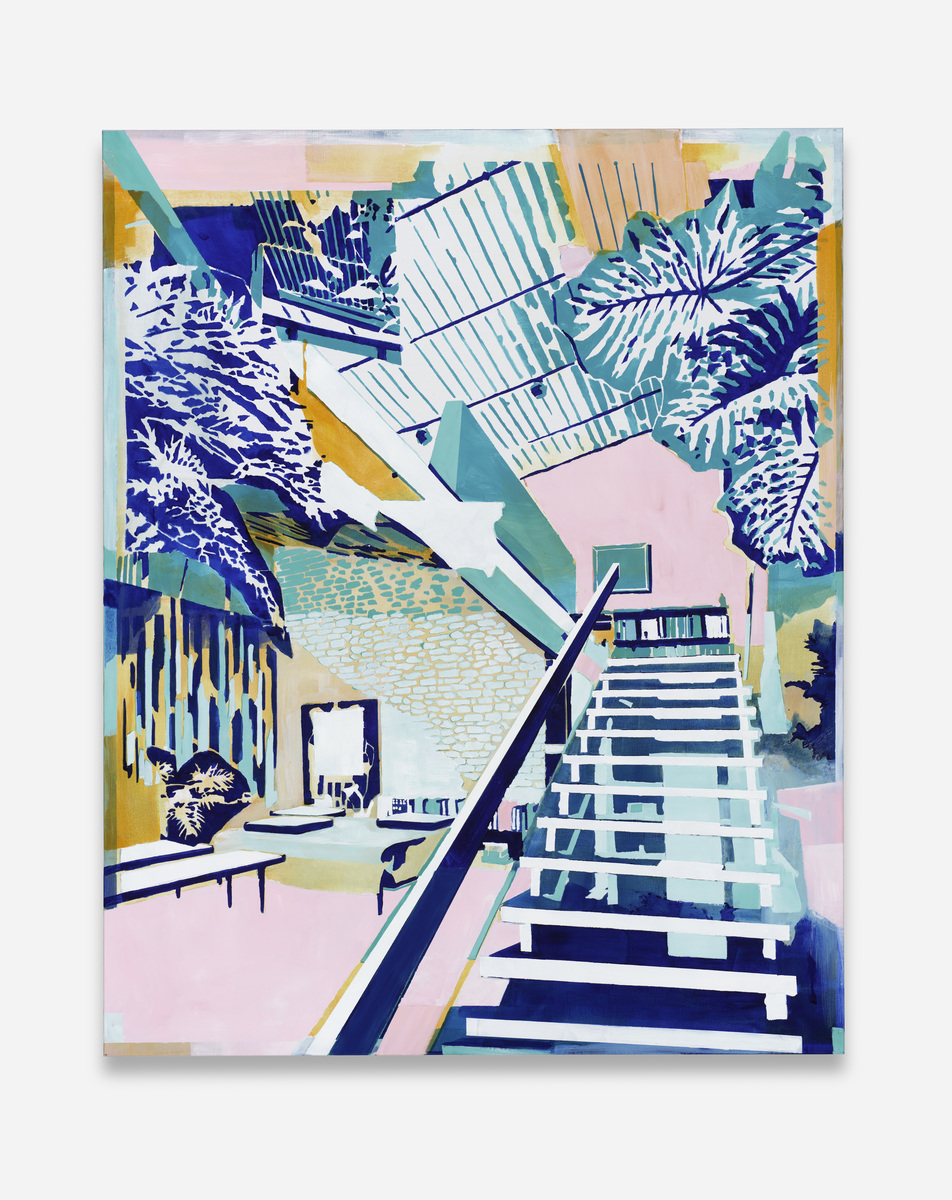
Paul DaviesWalsh 1 2022acrylic on linen153 x 122 cm●●
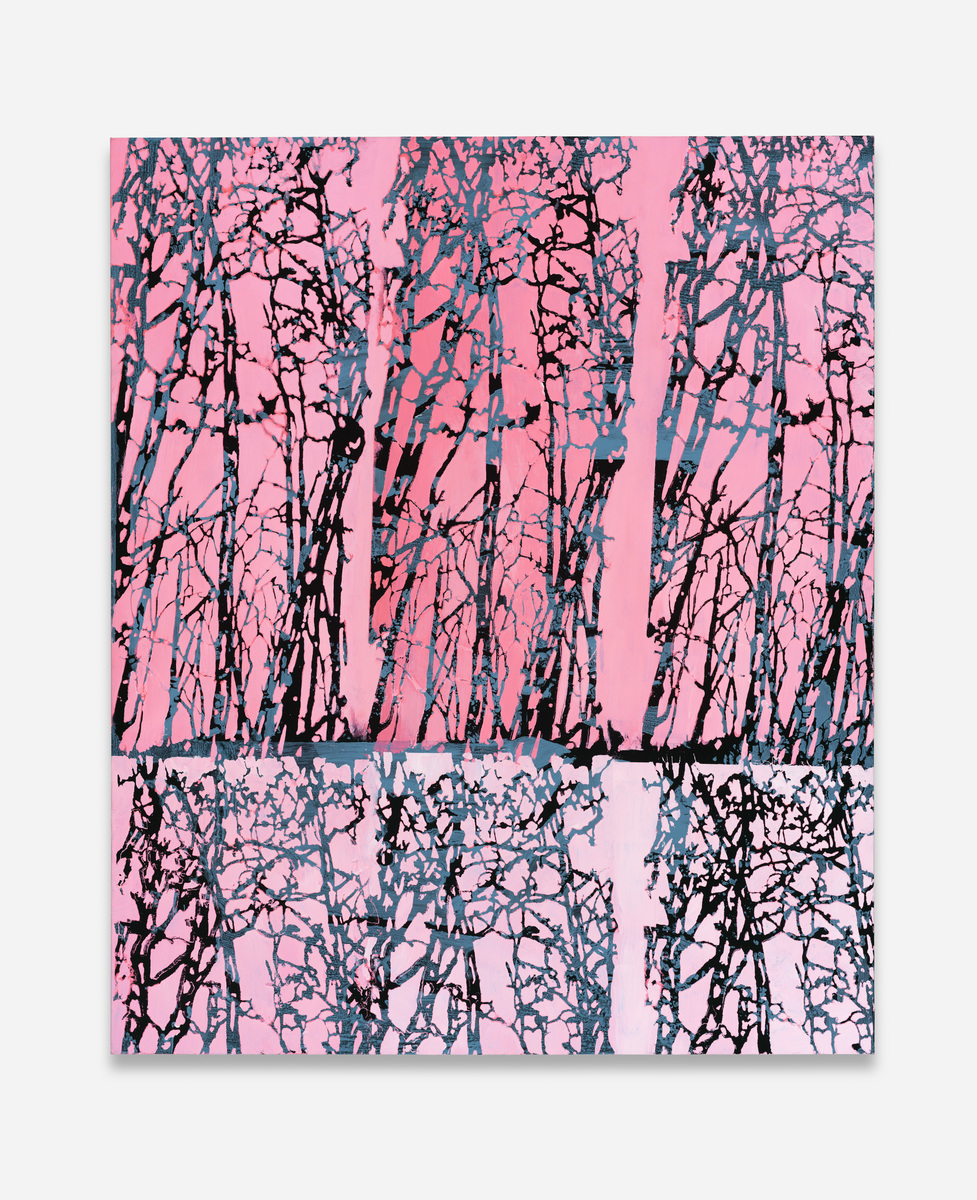
Paul DaviesUntitled 1 2022acrylic on linen185 x 153 cm$35,000.00
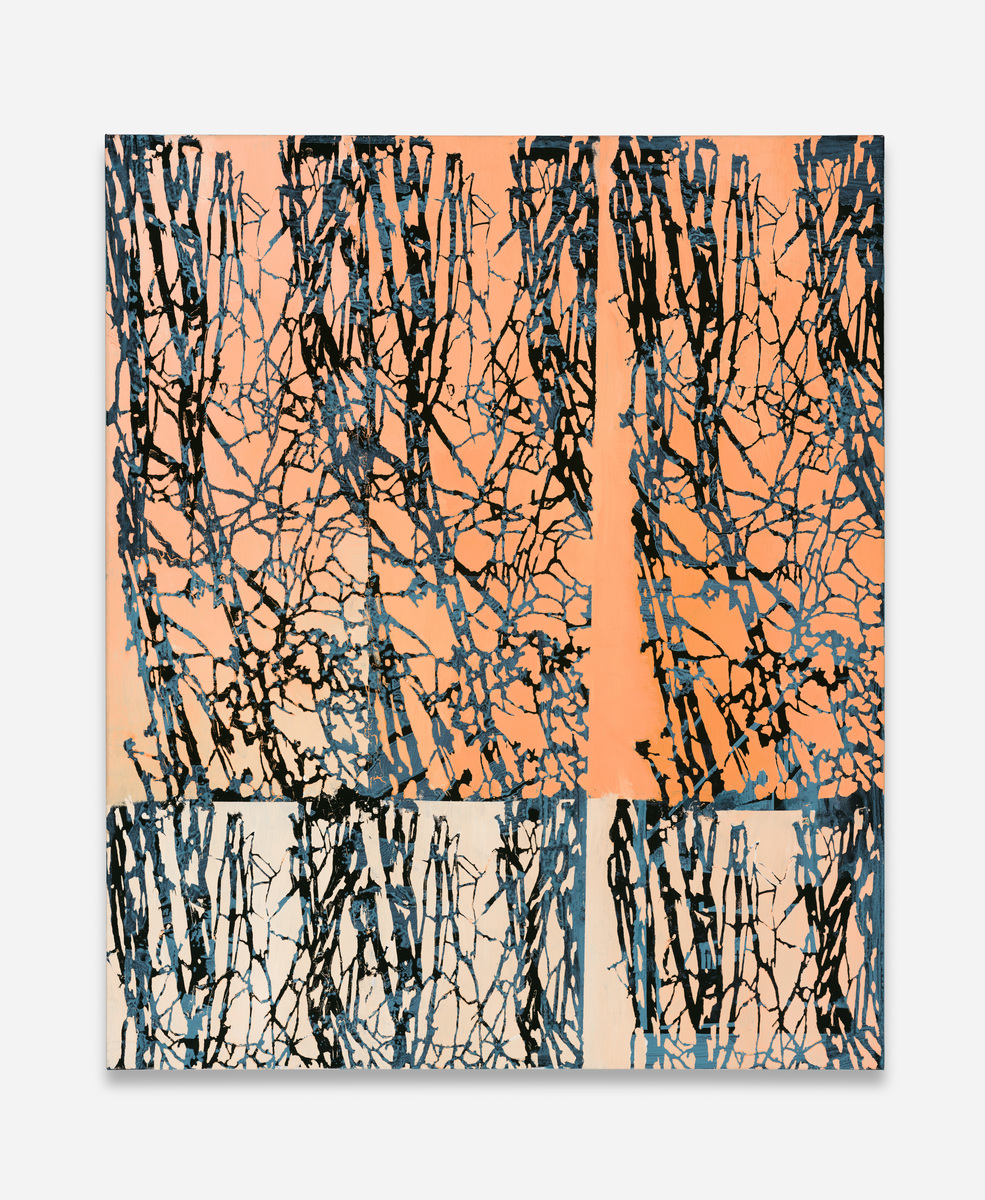
Paul DaviesUntitled 2 2022acrylic on linen185 x 153 cm●●
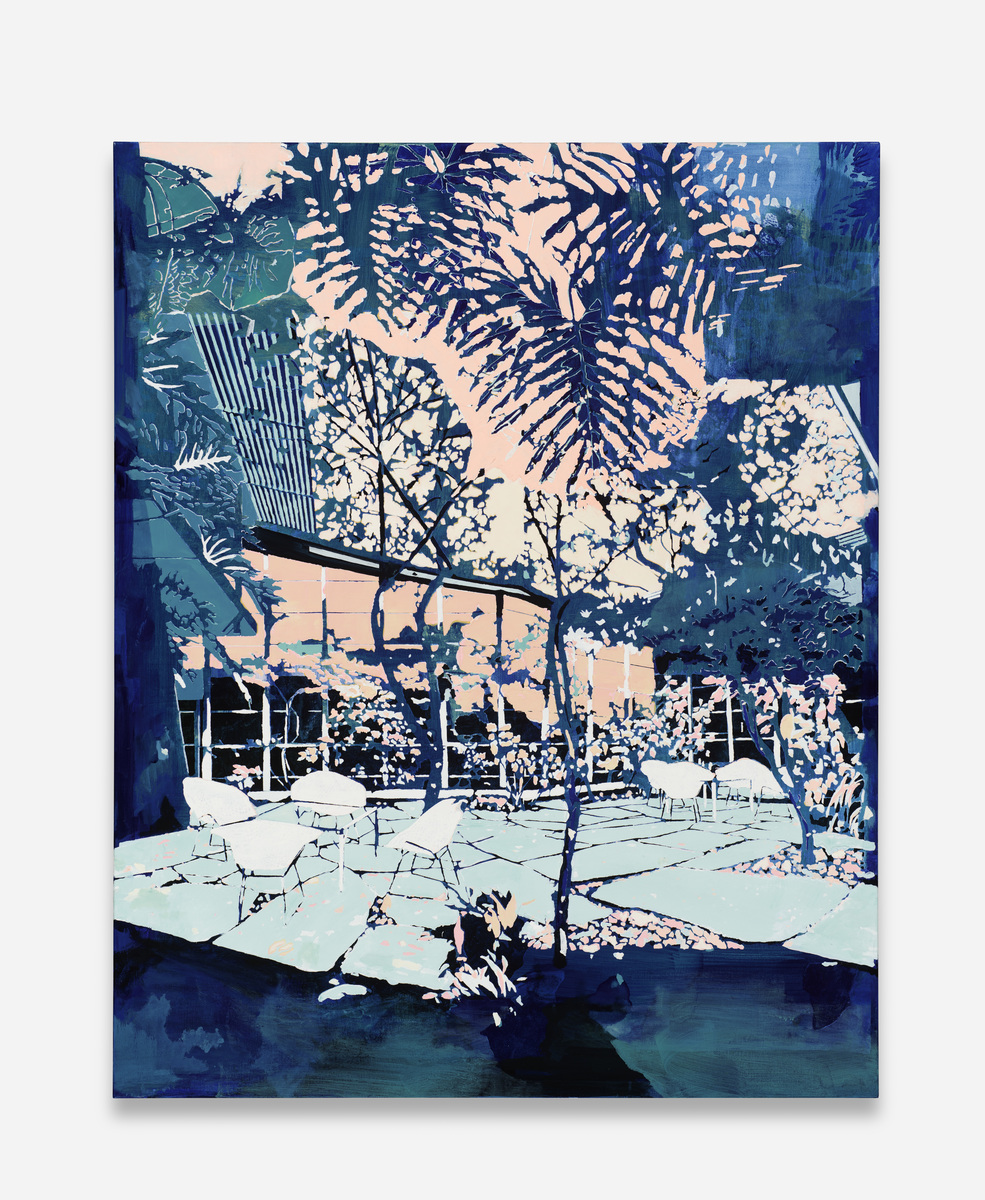
Paul DaviesWalsh 3 2022acrylic on linen153 x 122 cm●●
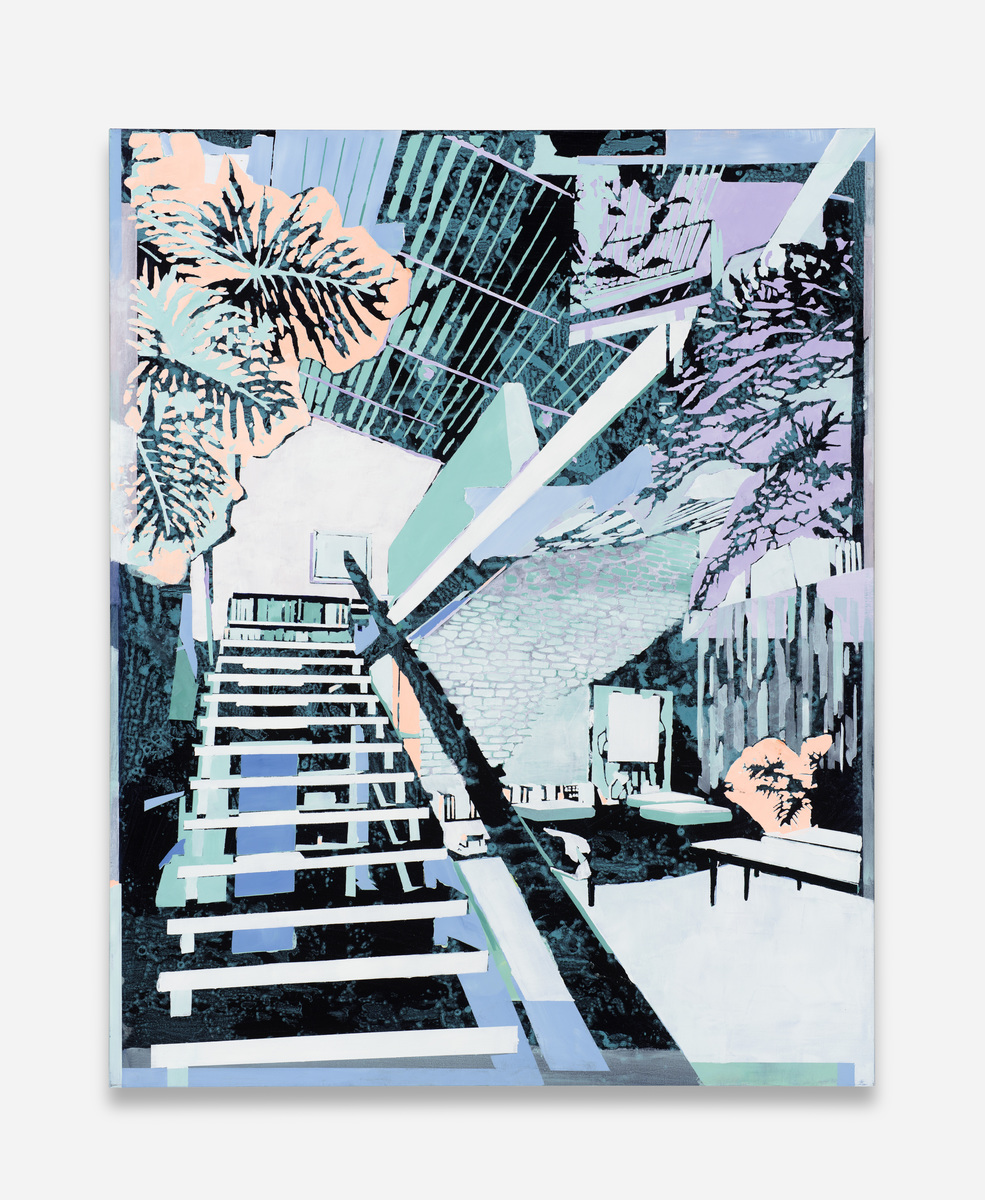
Paul DaviesWalsh 2 2022acrylic on linen153 x 122 cm●●
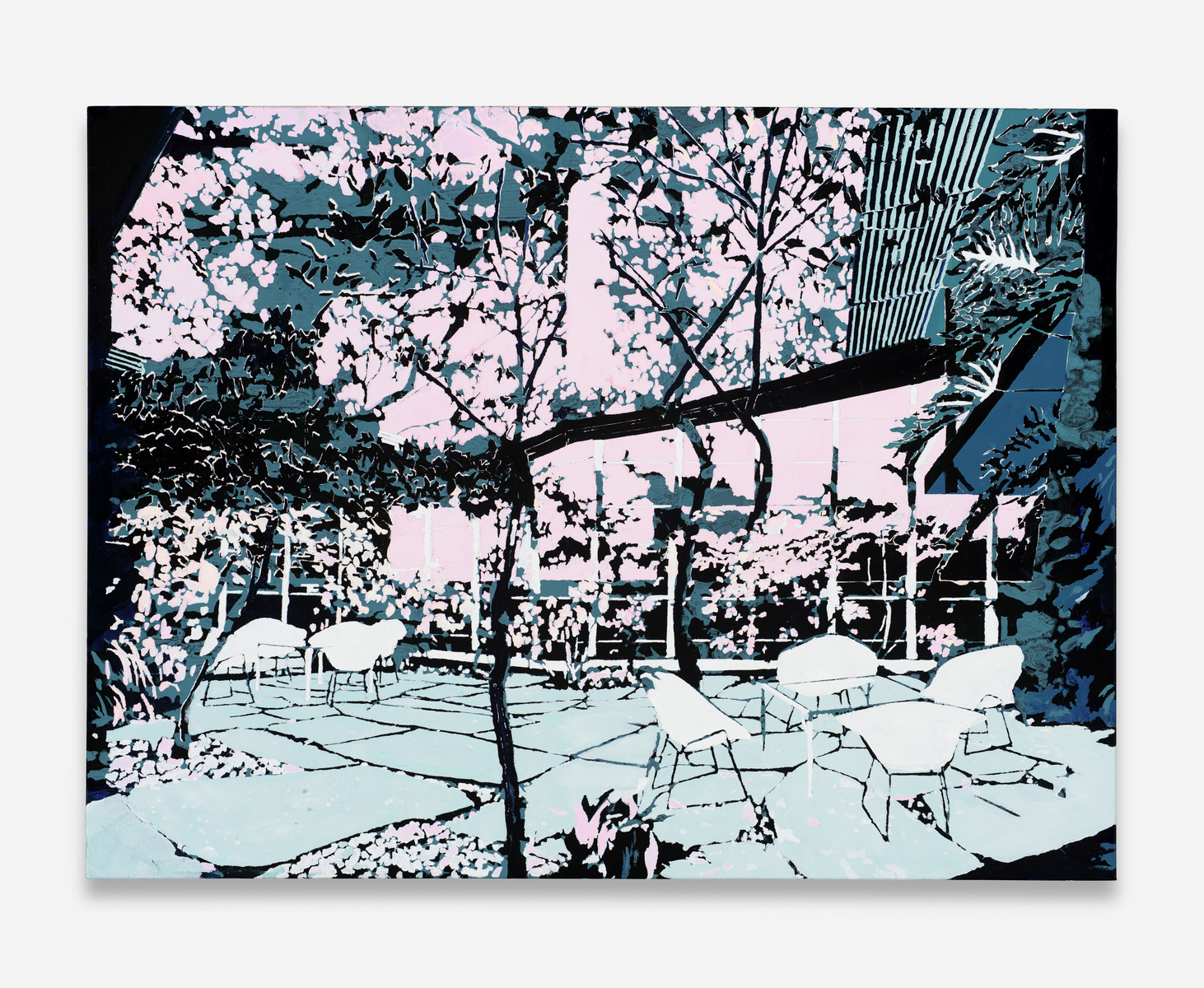
Paul DaviesWalsh 5 2022acrylic on linen92 x 122 cm●●
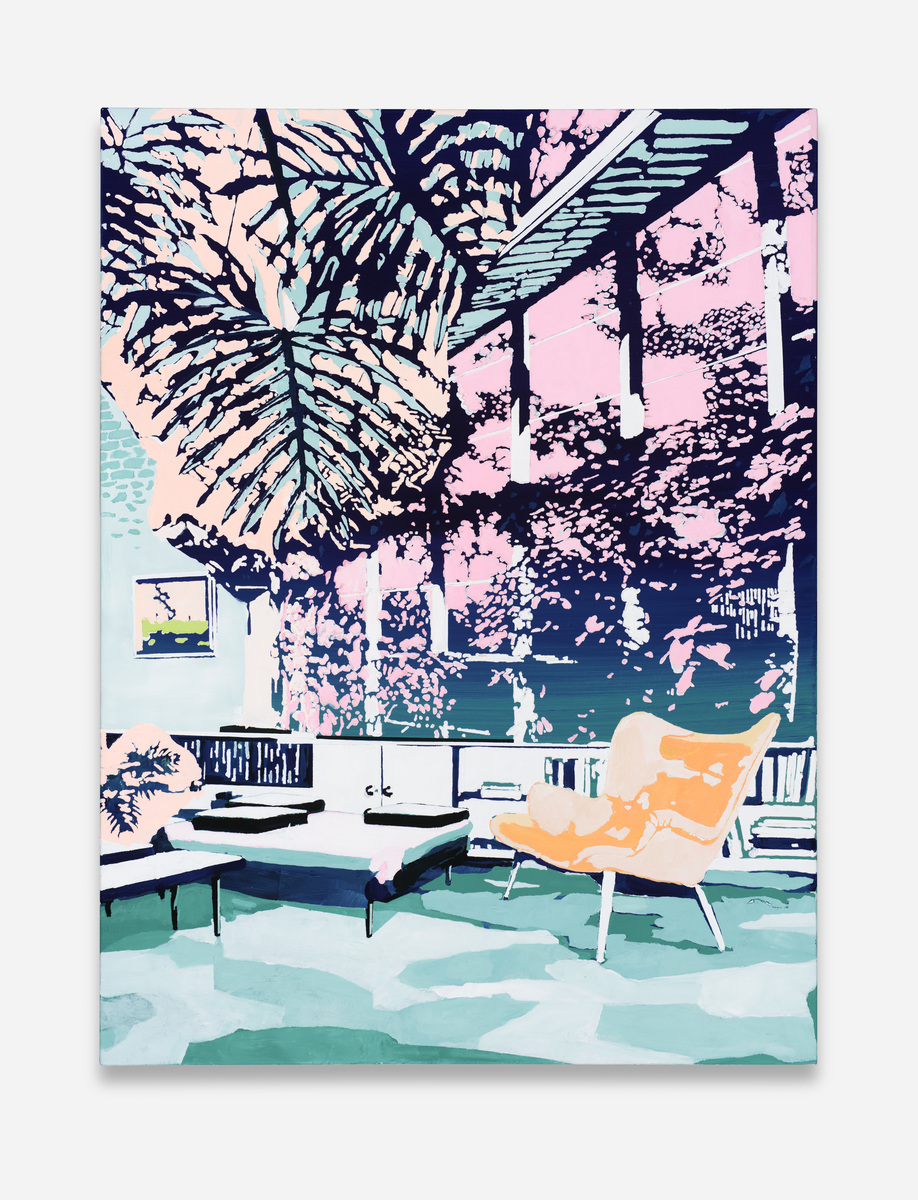
Paul DaviesWalsh 6 2022acrylic on linen122 x 92 cm●●

Paul DaviesWalsh 4 2022acrylic on linen122 x 153 cm●●
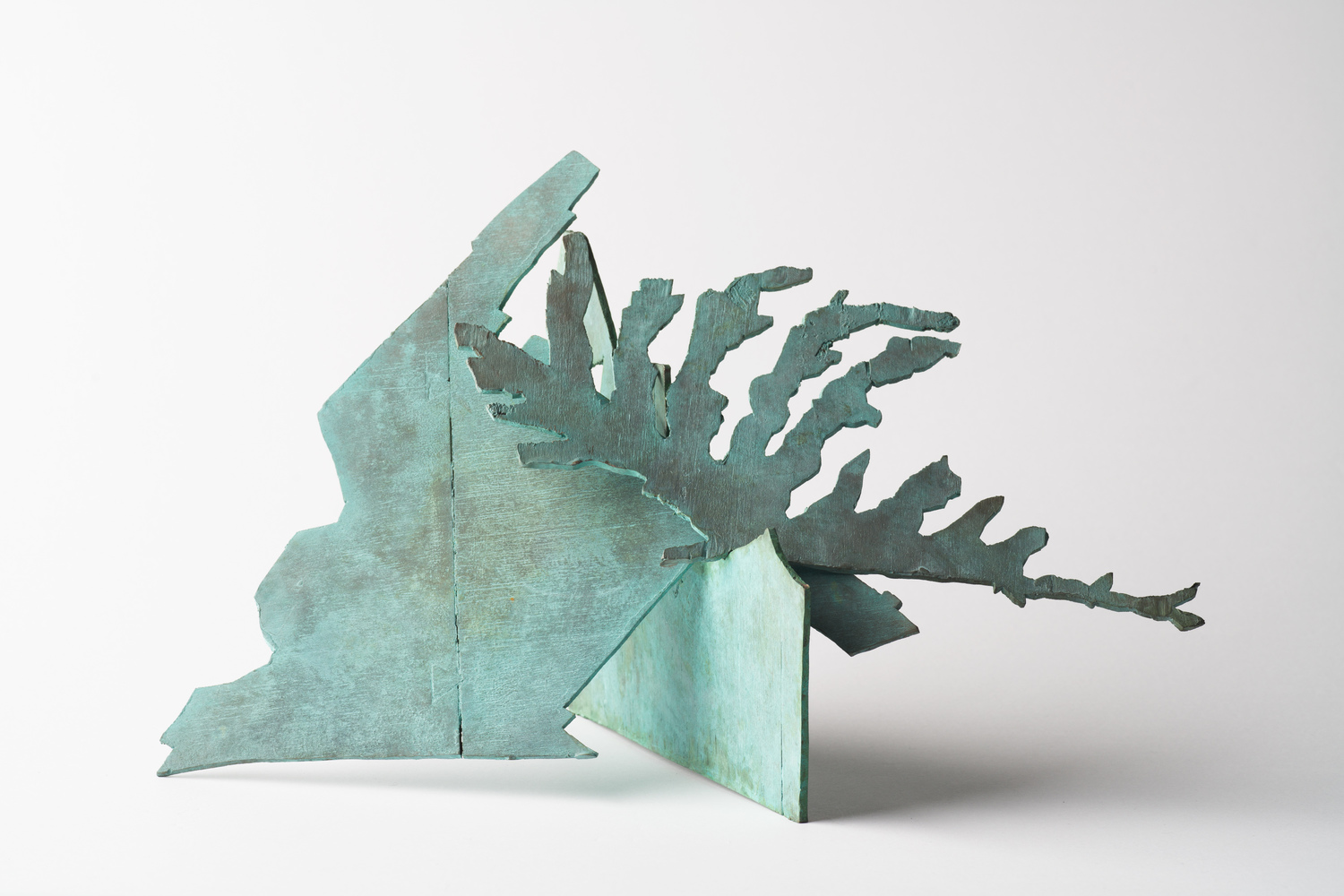
Paul DaviesUntitled 1 2022bronze30 x 30 x 20 cm●●

Paul DaviesUntitled 2 2022bronze30 x 30 x 20 cm●●
